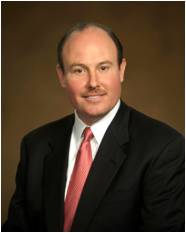A Partnership For The Public Good
 Last month, the U.S. Department of Commerce announced the selection of members for the First Responder Network Authority (FirstNet), a unique public-private board of directors who will oversee the creation of the Public Safety Broadband Network (PSBN). Building the PSBN is a historic national effort that will bring our first-responder communications into the 21st century and help our nation’s heroes get the resources they need to better protect our communities and our citizens, and respond more effectively to emergencies wherever they take place.
Last month, the U.S. Department of Commerce announced the selection of members for the First Responder Network Authority (FirstNet), a unique public-private board of directors who will oversee the creation of the Public Safety Broadband Network (PSBN). Building the PSBN is a historic national effort that will bring our first-responder communications into the 21st century and help our nation’s heroes get the resources they need to better protect our communities and our citizens, and respond more effectively to emergencies wherever they take place.
With the recent landfall of Hurricane Isaac, the needs of state, local, and federal first responders are at the forefront of our minds – for both first responders and those being rescued, getting in place the best public safety communications network possible is of the utmost importance.
Our team at Textron Systems is committed to the success of the PSBN and has invested in a series of exercises to map out the challenges inherent in its development, create a roadmap for success and answer the most pressing questions facing leaders charged with developing the network. Of the many questions FirstNet will have to tackle in developing the PSBN, the first and most glaring is how to build a network with the $7 billion Congress has allocated for it, when cost estimates have ranged far higher, between $30 and $60 billion. The reality is that $7 billion is clearly not enough money to build wholly dedicated infrastructure for the network. However, the opportunities for public-private partnerships are numerous and would have profound positive effects on the future footprint of the PSBN.
Recently, Textron Systems convened a group of high-level stakeholders to look at the question of what a successful business model for PSBN might look like – in other words, how does FirstNet use the $7 billion wisely? With more than 30 participants representing a cross-section of the public-safety community; industry stakeholders; and state, local, and tribal regions, we identified a “managed federally, coordinated locally” model that would break down the U.S. map into regions in order to effectively develop the network. The 10 Federal Emergency Management Agency (FEMA) regions, for example, might provide a manageable operating structure. Interestingly, when one compares the FEMA regions against the carrier coverage maps, it becomes clear that there is no nationwide carrier that could successfully operate in all of the regions—but there are carriers with substantial footprints in each region.
The industry exercise identified another signpost to success: the competitive nature of the major commercial carriers keeps them in an aggressive mode of expansion to provide customers the greatest coverage. Indeed, competition is what keeps pushing further innovation and better services and should be harnessed to benefit the PSBN in the long run. The results were clear: the FirstNet board must have the flexibility to choose the best mix of providers for a given region and not be hamstrung by long-term one-size-fits-all contracts that would stifle innovation, increase costs and decrease the resiliency of the network. Instead, competitive procurements at all stages of PSBN development can leverage competition to expand the PSBN footprint, ensure the network’s flexibility and adaptability and, ultimately, provide the best value to American taxpayers.
As the final recommendation of the federal 9/11 Commission to be implemented, FirstNet owes it to the brave first responders across the United States to get it right. A 4G communications system that provides voice and data to first responders will immensely improve their safety, effectiveness, and ability to serve and protect the public. Allowing all industry participants to enter into open competition for each region will be the best way to provide that support to our first responders and help ensure that FirstNet delivers for the American people.
Don Hairston is senior vice president/general manager of Advanced Systems, an operating unit of Textron Systems, a Textron Inc. company. Contact him at
homasak@aai.textron.com.